This week I had a spare half-hour in the Strathearn Community Library in Crieff, and decided to spend it perusing old copies of the local paper, the Strathearn Herald.
First of all I decided to have a peep at 1958-9 to see whether there was any record of my husband's birth - when he arrived in the world his parents were actually living in Crieff, although they moved on soon afterwards, so he has a kind of claim to be "local", even though I definitely don't! I was delighted to find a birth announcement, which I duly photographed so that I could amaze my husband later.
After that I was at a bit of a loose end, so I decided to look at the very earliest copies of the paper available, which were from the 1850s, when it was still known as the Crieff Herald & Strathearn Advertiser. I wasn't looking for anything in particular, but by pure chance I came across a letter addressed to the editor by "An Antiquary" of Glasgow. The letter was all about Innerpeffray and its library, which is a bit of a pet subject of mine. I thought it might be fun to reproduce it here. The writer says he visited the library "some years" before, so perhaps about 1850 - now over 160 years ago! This is what it says:
INNERPEFFRAY
TO
THE EDITOR OF THE CRIEFF HERALD
SIR, One of the most interesting localities in the neighbourhood
of Crieff is Innerpeffray, as there is so much to be seen there. There are the
remains of the old castle, still very entire, the ancient chapel with its
graveyard and singular monuments, the library of rare and antiquated tomes, the
neat modern schoolhouse, the romantic situation which they occupy, and the
relics of the noble old trees which adorn it, though the latter are but few in
number now. Some years ago I visited them all, and was much gratified by doing
so, as they well merit even a more lengthened pilgrimage than that from Crieff.
The schoolhouse was at that time untenanted, but I was happy to learn recently
that it is now occupied, as the neighbouring children will thus have suitable
instruction at their doors, without having to wander for miles in search of it.
Several of the tombstones in the graveyard are very quaint, and well worthy of
preservation although the effects of time and the weather have sadly defaced
many of them, so that their curious carvings and inscriptions can now scarcely
be deciphered. The most singular of the whole, however, is still quite perfect,
and is such a gem, that photographs
of it on a large scale, should be taken for the museum of your Mechanic’s
Institution, and to sell to visitors, many of whom, I doubt not, would like to
possess a facsimile of this
interesting tombstone. I allude to the monument of the Faichney family, on
which father and mother and all their children are not only named, but “lively
effigies” of each of whom are also represented on the stone, in addition to
sundry inscriptions and the ordinary churchyard emblems of mortality.
Means, too, I think, might be used for
giving access to the interior of the old chapel, as doubtless much that would
interest, in the shape of carvings, inscriptions, and monuments, would thus be
thrown open to the inspection of the visitor. In one part of it, I saw through
the locked iron gateway, the several pieces of a large and very singular
sun-dial, something like the one in Drummond Castle gardens, which well merits
being rescued from the vault in which it is immured, and rebuilt in front of
the schoolhouse. If this were done, and I sincerely trust it will be shortly,
another and most interesting addition to the antiquities of Innerpeffray would
gratify the eyes of future visitors.
I spent an hour, too, with much satisfaction in the library,
which has many very rare and scarce works in divinity, history, poetry,
geography, and other subjects, a few on astronomy and astrology, and also the “Breeches”
Bible, which belonged to Lady Madderty. The books are generally of a class not
to be met with elsewhere – the only library of a like kind which I have seen
being one at Dunblane, - and the printer’s devices on the title-pages, the
illustrations, and the contents of many of them were so quaint and singular,
that I would willingly have spent days in that old library, as almost every
volume seemed well worth a leisurely inspection. Facilities for reading them
there, and also taking them home for perusal were, I understood, granted to certain
parties. This I was glad to learn, but yet I regretted at the same time that
the latter was permitted, as the bindings of many of the volumes were very
defective, and the sheets inside quite loose, so that the latter might easily
be lost; and with books of this class such a loss would be irreparable, and
greatly to be deplored. Ample funds, I was told, had been left, not only for
keeping the books in proper order, but also for adding to their number, from
time to time, works of a similar class. Surely if the matter was properly
looked after, the latter should yet be done; but, at all events, the repairing
of the bindings of the volumes already there should no longer be neglected, as
it was painful to see such fine old books going to ruin in this way through
neglect. It is possible, however,
that this may have been done, and the sun dial again restored to the light of
day, since my visit to Innerpeffray, and I shall be happy to learn that such
has been the case, - but if not, I trust that what I have said may induce some
of your spirited townsmen to interest themselves in the preservation of the
valuable old library, and the restoration of the beautiful sun-dial. Apologies
for the length of this letter, I am, &c.,
AN
ANTIQUARY
Glasgow, 31st
December 1856.
If you're interested, here are some pictures of some of the things "An Antiquary" describes! (NB I wonder why he felt the need to hide behind that epithet rather than giving his real name? The letter isn't wildly controversial - unless he expected angry citizens of Crieff to suggest he contributed his own time and money to preserving the books rather than suggesting they did it!)
Above: the library (left) and chapel (right)
Above: interior of the chapel, apparently closed when the Antiquary visited
Above: the Faichney monument
Above: detail of the monument, which was to Jean Murray and James Faichney and their children
Above: the interior of the library
The one thing I don't recall seeing on any of my visits to Innerpeffray is the sun dial mentioned in the letter. You can see a photo of the one at Drummond Castle Gardens here: http://www.sundialsofscotland.co.uk/
I don't think I have ever seen anything like that at Innerpeffray, but I will be sure to take a look next time, and ask the librarian.
The library at Dunblane that the Antiquary mentions is the Leighton Library and I must make a visit to that, too! It will probably be some time before I can manage that, since I don't usually have the car during the week, but when I do, I'll be sure to post some details about it.
---------------------------------------------------------------------------------------------------------------------------
Addendum 28th April 2013: I visited Innerpeffray Library today and looked in vain for the sundial, either inside the church or outdoors. I then asked librarian Lara Haggerty, who told me that it is no longer at Innerpeffray. She is going to let me know what has happened to it - so watch this space!







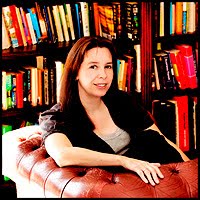
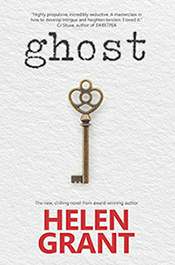
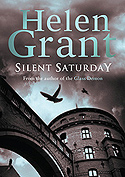
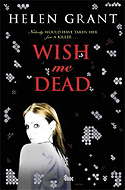
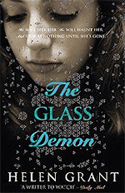

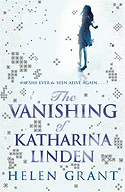
This comment has been removed by a blog administrator.
ReplyDelete